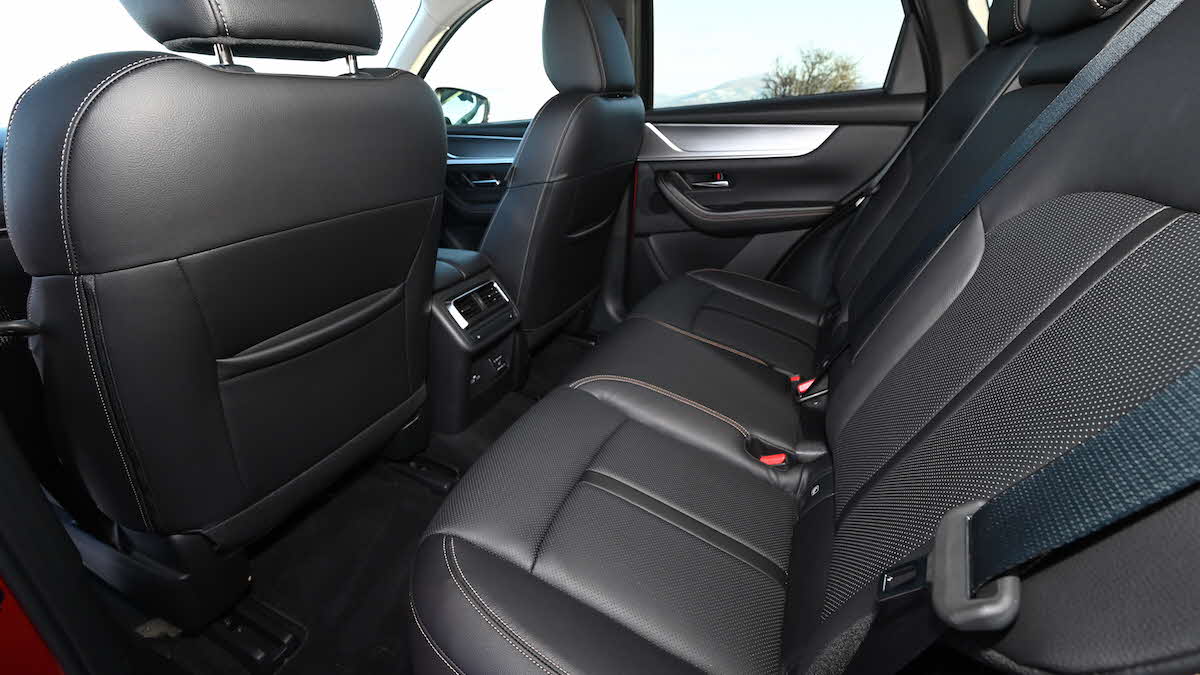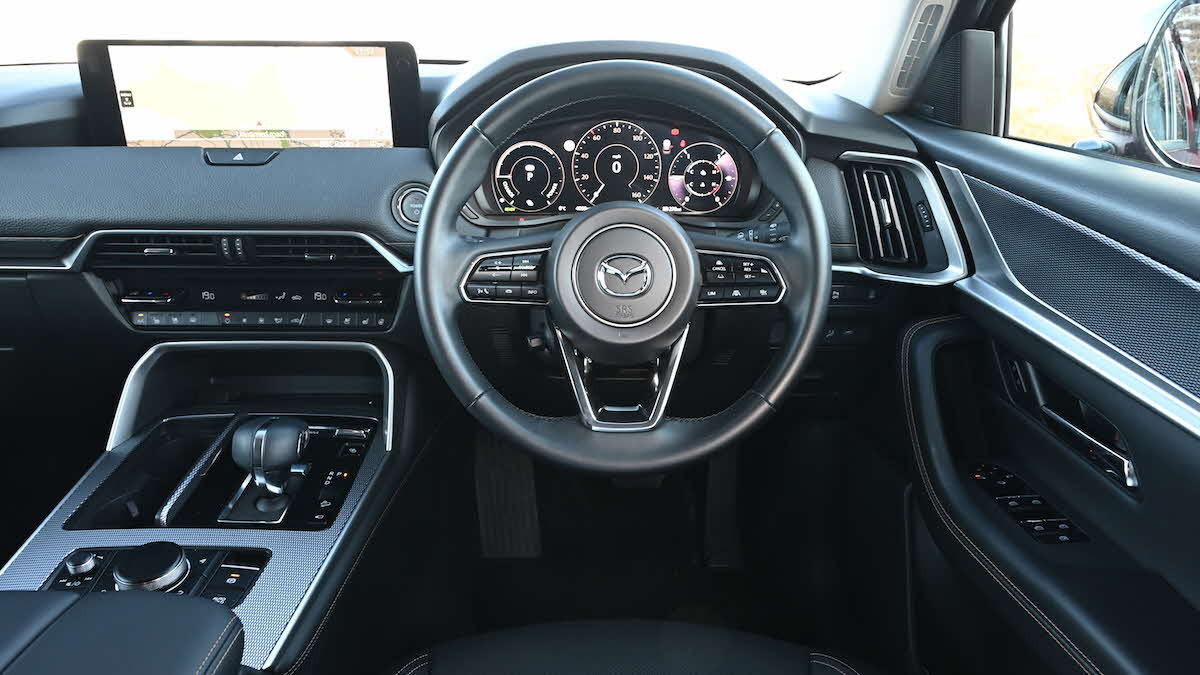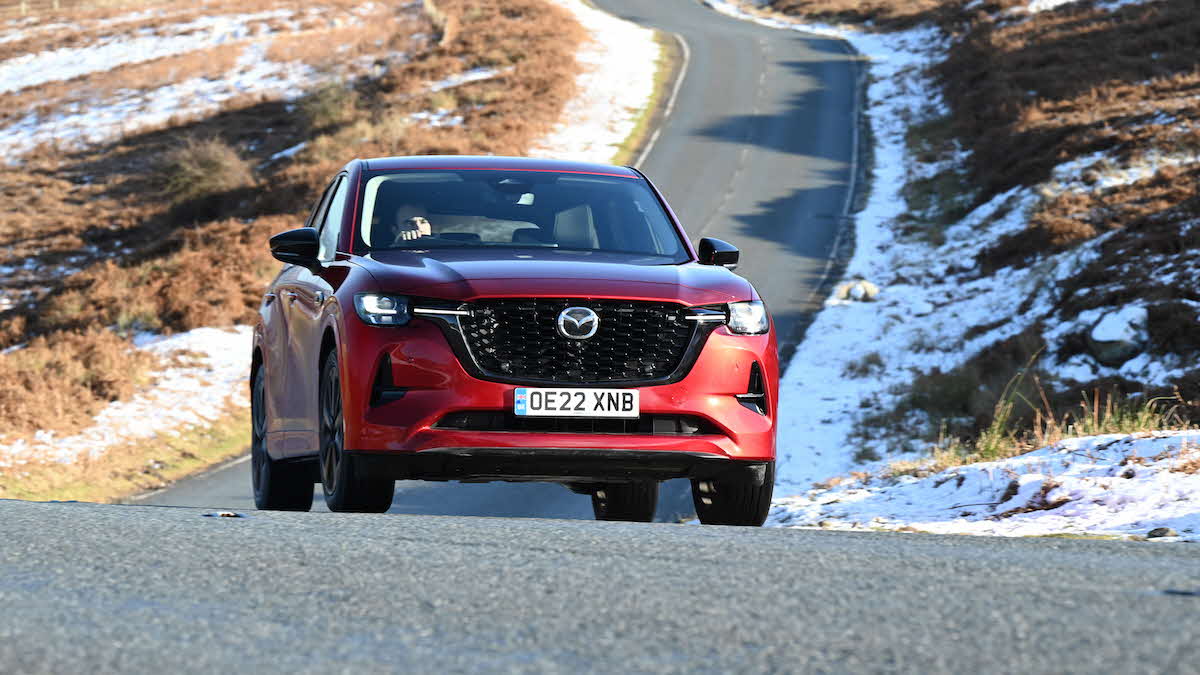New and used
Browse for bargains from thousands of new and used vehicles for sale, or sell your caravan, motorhome, towcar or accessories.
Buy and sell nowJames Batchelor tests Mazda’s more premium SUV, which features the company’s first plug-in hybrid system
For the past decade, the only choice for caravanners looking for an SUV wearing the Mazda badge with decent space and towing abilities has been the CX-5. That has now changed.
The new CX-60 is an important car for Mazda. It’s now the largest SUV the Japanese brand offers in the UK (although an even larger CX-80 is on the way), it’s the company’s first attempt to offer a more premium car, and it comes with Mazda’s first ever plug-in hybrid system.
With Mazda’s strong heritage of winning towcars, I was keen to get behind the wheel.

Sitting above the CX-5 in Mazda’s range, the CX-60 has a suitably larger body with a more imposing front-end, a long bonnet and a stubby rear-end. The CX-60 looks simple and elegant and the same goes for the interior.
Top-spec cars feature hand-stitched fabrics covering the dashboard, and real wood and metal inlays in the centre console and door trims. The rest of the range is almost as luxurious, with even entry-level versions getting black leather upholstery, heated front seats and steering wheel, a colour head-up display and an electric tailgate. This mid-spec Homura adds a Bose sound system, heated rear seats and Mazda’s Driver Personalisation System to the standard kit, the latter using facial recognition to adjust the seating and steering wheel positions for different drivers.
Mazda has foregone the trend for enormous touchscreens and instead fitted a nicely sized 12.3in screen mounted away from the driver. It’s controlled by a rotary dial on the centre console. However, the standard-fit Apple CarPlay and Android Auto smartphone connectivity is designed for touchscreens, and not rotary wheels. It means that flicking between Google Maps and Spotify, for example, is unnecessarily difficult, but it’s not a deal-breaker – especially when you bear in mind the level of equipment that’s thrown in relative to the price.
The CX-60 is a large car, but it’s strictly a five-seater. Upfront space is plentiful but taller passengers might bemoan a slight lack of headroom. The back seats are extremely comfortable, though, with decent knee room, and my test car featured heated seats, USB-C charging ports and even a three-pin socket. Boot room stands at 570 litres, expanding to 1,726 with the seats down. There are little storage pockets, a 12V socket, and the towbar (priced at just over £1,100) is semi-electrically deployable with a button on the side of the boot area.

Not only does the CX-60 show off Mazda’s premium aspirations, but it also debuts the firm’s new plug-in hybrid powertrain.
At the time of this review going to print, Mazda was readying the launch of a brand new 3.3-litre straight-six diesel engine for the CX-60 and setting out plans to introduce a 3.0-litre straight-six petrol.
Here we’re focusing on the hybrid. With 323bhp, the CX-60 PHEV (plug-in hybrid) becomes at a stroke Mazda’s most powerful production car ever. It pairs a 2.5-litre four-cylinder petrol engine with a 134bhp electric motor sitting on the back axle to give four-wheel drive, and an eight-speed automatic gearbox. That motor, meanwhile, is powered by a 17.4kWh battery. Acceleration is suitably brisk, with 0-62mph taking under six seconds, while there’s the potential for up to 39 miles of pure electric driving when the battery is fully charged (which takes two hours and 20 minutes from an 11kW charger).
Leave the car in its default ‘normal’ mode, and it automatically flits between petrol and electric power. Rival PHEV SUVs transition between the two power sources seamlessly, but with the CX-60 there’s the occasional shunt. For the most part, though, electric driving is prioritised – that 39-mile figure is pretty accurate – and because Mazda has used an eight-speed gearbox with a multi-plate clutch instead of a hybrid’s conventional CVT (continuously variable transmission), the gear changes are swift.
For a car of this weight, the CX-60 gets down the road with surprising vigour. There’s not quite the same razor-sharp handling you find in the smaller CX-5, but the CX-60 is a very entertaining steer. It feels typically ‘Mazda’ in having an agile chassis, direct steering, and excellent body control.

Mid-spec Homura, as tested here, and range-topping Takumi models get the full gamut of driving modes, including ‘off-road’ and ‘towing’. Mazda says these models calibrate the intelligent all-wheel drive system (which can switch from rear- to all-wheel drive depending on road conditions automatically) for better traction and, in the case of the ‘towing’ mode, better stability.
Once hitched up and in ‘towing’ mode, the car prioritised petrol power over electric, which highlighted how coarse the four-cylinder engine is when pulling a heavy load; electric assistance was minimal during testing. Moreover, the car felt slightly sluggish from standing starts on flat surfaces, although Mazda says this is normal as power is restricted to improve stability. ‘EV’ mode gave better acceleration and refinement, but the only problem with this mode is that the car is in a rear-wheel drive configuration, which could be problematic on slippery surfaces. Having said that, I tested the car in freezing conditions and on salted roads, and it felt incredibly stable even in ‘EV’ mode.
Aside from the engine feeling a bit strained, the CX-60’s fine qualities when driving solo really shone through when towing. Other observations were excellent 360-degree cameras, good wide-view rear-view camera, and mirrors that allow for easy attachment of towing mirrors.

Offering the fine driving characteristics, the company is known for, this is a promising first step in Mazda’s aspirations to become a maker of premium cars and to transition to electric motoring. A future test may confirm that the diesel will be the better choice for towing, but the CX-60 PHEV is a strong proposition in a growing selection of electrically assisted large SUVs.